FARM BUSINESS ADVICE SERVICE
GSC Grays are offering FREE business advice to farmers across the North of England to help them find the most profitable and sustainable solution for their business.
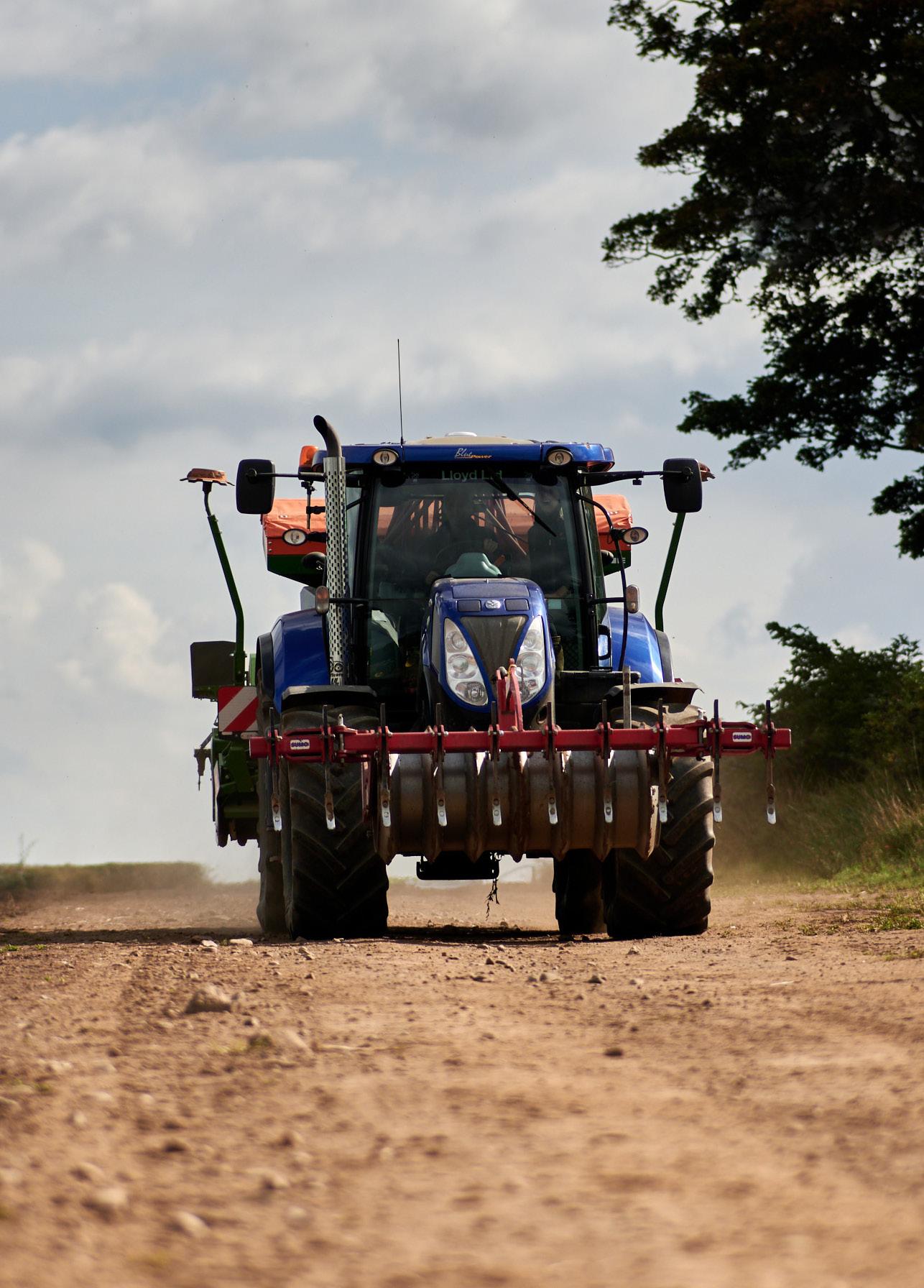
PAYMENTS BY RESULTS
Is this the future of agrienvironment funding?
FARMING THROUGH INFLATION
How does inflation impact the rural sector and how do we mitigate it?
ISSUE NO. 5 NOVEMBER 2022
WELCOME FARM BUSINESS ADVICE SERVICE
GSC Grays are offering FREE business advice for farmers across the North of England.
INTRODUCING THE ARABLE MODEL FARM
FARMING THROUGH INFLATION
How does inflation impact the rural sector and how do we mitigate it?
FUTURE PROOF
FARMING
5 steps farmers can take now to make their farm more resilient and sustainable.
FUNDING FUTURE FARMERS
‘Oxbury New Gen’ offers a new approach specifically for new entrants to farming.
ON FARM RENEWABLES
PAYMENTS BY RESULTS
Is this the future of agrienvironment funding?
IS YOUR LAND RIPE FOR HOUSING DEVELOPMENT? AGRICULTURAL TENANCIES
Could tenanted holding back inhand be worth two in the bush?
AGRICULTURAL LAND
An investment opportunity worth considering? FORMAL
VALUATIONS
Have you considered what you are actually worth?
PROPERTY ROUND-UP LAND AGENCY
A unique view of the changing role of a Land Agent through the decades.
CHAIRMAN’S
CLOSING REMARKS
WELCOME TO THE TEAM FARMING BREAKFASTS 2022
We invite you to join us at our farming breakfasts.
GSC GRAYS
1 2 4 6 8 10 18 12 14 20 22
26 28 30 31 33 ISSUE NO. 5 NOVEMBER 2022
24
CONTENTS
These are tumultuous and uncertain times. The current political and economic climate provides bleak reading. The ramifications of Kwasi Kwarteng’s September mini budget are still being acutely felt. The weakened pound and rising inflation have resulted in the worst cost of living crisis since the 1950s, which shows little sign of abating. The conflict in Ukraine continues to create worldwide increases in energy and food inflation, bringing food security and energy generation further up the agenda. The UK has fallen into recession, how deep and for how long remains to be seen. Jeremy Hunt will deliver his Autumn Statement on Thursday 17th November, his plans will no doubt be a stark contrast to the tax cuts announced by Mr Kwarteng. Few people, or businesses, will be immune to the effects.
The agricultural sector is no different and is arguably experiencing the most significant pressures on the industry for a generation. One year out from BPS payments being halved, over 60% of farm businesses remain unprofitable without this support.
We are living through unprecedented times. Now more than ever we need to be adaptable, dynamic and innovative.
The agricultural industry also needs to adapt to build resilience and sustainability. Farm businesses need to become more dynamic and improve their
productivity and efficiency, and find innovative solutions to profitability through new enterprises and diversification opportunities. Understanding the value of ecosystem services such as Biodiversity Net Gain, Nutrient Neutrality, and Carbon will all have a part to play.
I believe over the next 10 years we are going to see the biggest change in agriculture that we will see in our lifetime.
WITH CHANGE COMES OPPORTUNITY WHICH IS WHY FARM
BUSINESSES
NEED ADVICE MORE THAN EVER.
On that note, I am delighted to announce the launch of our Farm Business Advice Service (FBAS). Funded by DEFRA, we will provide farmers in the North of England with FREE and independent advice to support them through this period of unprecedented change, to identify and map out ways to achieve long term profitability and success. See page 2 for more details.
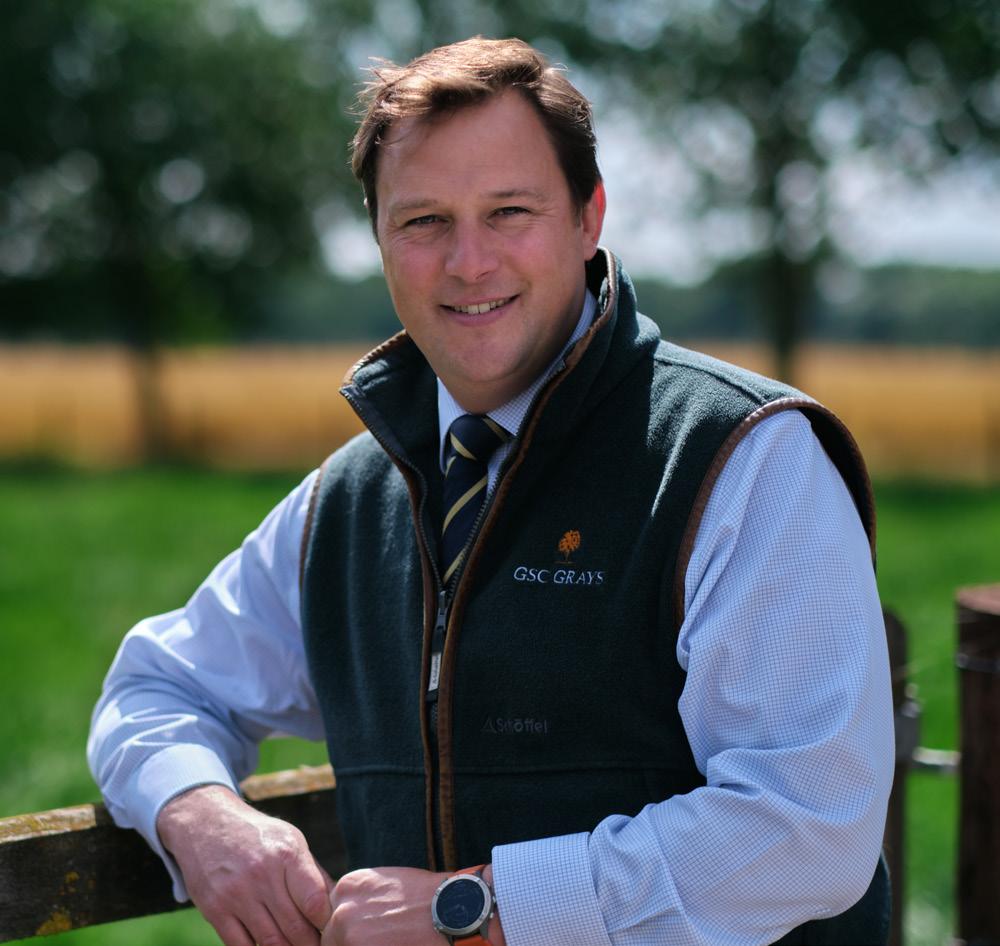
Farm businesses wanting to act now should head to page 8 where Jamie Charlton details 5 steps farmers can take to make their farm more resilient and sustainable. As part of the business reviews we have already undertaken, there has been a growing interest in farm-scale renewable energy schemes to help mitigate rising energy costs. Will Pheasey provides helpful guidance on these schemes on page 12.
Further content includes investment opportunities through the acquisition of agricultural land, and conversely, selling land for housing development.
This is a challenging but also exciting time for our sector. I hope this issue provides you with food for thought and sound advice to maximise the opportunities that exist, despite the uncertainty.
GUY COGGRAVE
MANAGING DIRECTOR 01748 897606 gsc@gscgrays.co.uk
GSC GRAYS NOVEMBER 2022 1
Change creates opportunity for those with the courage to embrace it.
WELCOME
FARM BUSINESS ADVICE SERVICE (FBAS)
GSC Grays are offering FREE business advice for farmers across the North of England.
We are delighted to report that we have been appointed by DEFRA as a lead provider to the Future Farming Resilience Fund (FFRF) Scale Up Project.
The FFRF project, which launched on 3rd October 2022 and runs through to March 2025, aims to engage 32,000 farm businesses across England.
DEFRA is providing £32 million of funding which offers all farmers and land managers who receive Basic Payment Scheme (BPS) payments, access to FREE business advice during the early years of the Agricultural Transition.
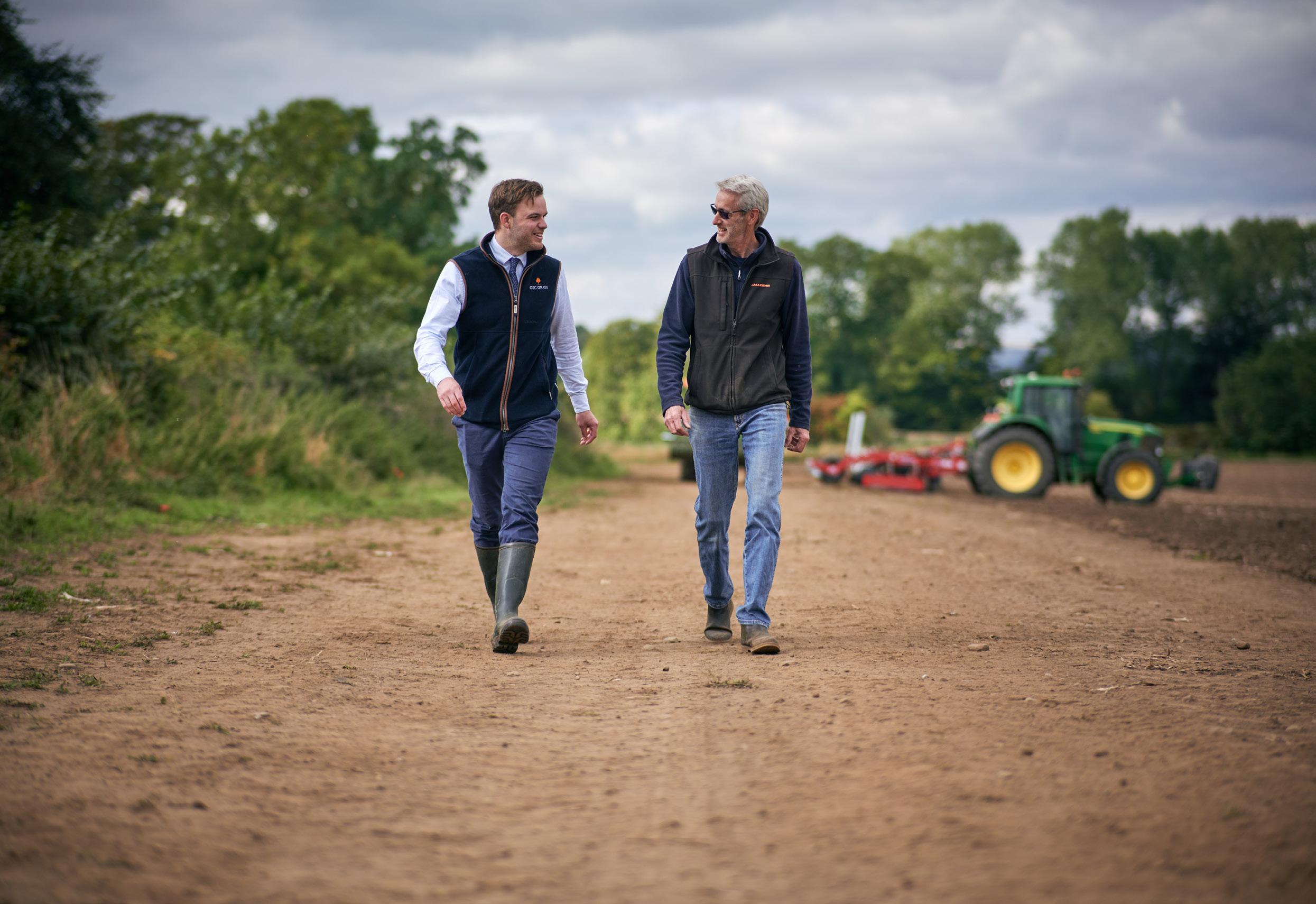
This advice will be delivered by 17 funded projects, including the Farm Business Advice Service (FBAS) from GSC Grays through which we are offering specialist business support to 1,650 farm businesses across all farming sectors in the North of England.
WHY DO FARM BUSINESSES NEED SUPPORT?
UK agriculture is arguably facing some of the biggest changes, and challenges, it has ever seen following our departure from the EU, DEFRA’s review of the existing support schemes, and current market volatility with rising commodity, fuel, fertiliser and energy prices.
The Agricultural Transition Plan began on 1st January 2021, with the start of the seven-year transition away from EU based schemes which sees the phasing out of direct payment schemes and closing of existing agrienvironment schemes. BPS payments will be around 50% in 2024 compared to the baseline year and final applications to the Countryside Stewardship Scheme will take place in 2023.
While this will inevitably put increased financial pressure on some farm businesses it will also provide opportunities. DEFRA has recognised this and established the FFRF to help farmers assess these opportunities and secure a sustainable farming sector for future generations.
GSC GRAYS 2
FBAS MISSION
More than 300 farmers benefitted from our expertise through a previous FFRF scheme provided by AHDB, seeing first-hand how invaluable budgeting advice and other simple steps can be in preparing farm businesses for the future. All farms are different, and one size does not fit all. Our aim is to provide bespoke advice that helps farmers to make informed decisions to prepare their businesses for the challenges ahead. Our mission is:
• Group support through on farm events and workshops, and business development group meetings.
• On-line resource centre and webinars. Examples of the advice we can offer include:
• Business expansion, restructuring or diversification.
• Business planning, budget forecasting and cashflow management.
• Improving productivity and financial returns.
• Maximising environmental stewardship
opportunities.
• Feasibility studies for new business opportunities.
• Succession and exit planning.
During this period of overwhelming uncertainty and volatility there is no better time for farm businesses to get some professional, independent advice. By March 2025, the challenges presented by the Agricultural Transition will clear and it is our intention that farmers who have accessed this free service will feel more confident in the direction their business is taking.
To find out more about FBAS, please visit gscgrays.co.uk/fbas, call 03333 059 059 or email FBAS@gscgrays.co.uk
A SUMMARY OF THE FBAS SERVICE
We can help farmers:
• Adapt to changes in farming through specialist and tailored support.

• Identify their business goals for the next 5-10 years.
• Develop an action plan detailing what they will need to do and when.
• Build a business which is profitable and sustainable without support.
What we offer:
• Bespoke business advice from our experienced Farm Business Consultants.
• One-to-one support through a half day, on-farm business review, and a potential specialist 2-day support service.
SCAN TO SIGN UP NOW

NEIL CARTER
RURAL ASSOCIATE DIRECTOR 0191 303 6373 nac@gscgrays.co.uk
GSC GRAYS NOVEMBER 2022 3
“TO PROVIDE SPECIALIST AND BESPOKE ONE-TOONE AND GROUP SERVICES THAT ADD VALUE TO FARM BUSINESSES, SUPPORTING THEM THROUGH THE AGRICULTURAL TRANSITION PERIOD, AND ENABLING THEM TO PLAN FOR A RESILIENT AND SUCCESSFUL FUTURE.”
INTRODUCING THE ARABLE MODEL FARM
KEY FACTS
Land Area
250 Ha typical arable farm located in North Yorkshire.
Cropping
Traditional rotation of 120 Ha Winter Wheat (WW), 60 Ha Winter Barley (WB) & 60 Ha Winter Oilseed Rape (WOSR).
Conventional establishment techniques.
The farm owns two tractors, a combine harvester and a sprayer, with grain handling and storage capacity on site.
Performance
Yields/Output – Harvest 2023
WW – 9.25 t/Ha @ avg. £230/tonne
WB – 8.40 t/Ha @ avg. £215/tonne
WOSR – 3.75 t/Ha @ avg. £640/tonne
Plus Straw
Inputs – Harvest 2023
WW – Fert; 190 kg N / Ha – Sprays; £225/Ha
WB – Fert; 140 kg N / Ha – Sprays; £200/Ha
WOSR – Fert; 220 kg N / Ha – Sprays; £240/Ha
The Farmer & Management Approach
Fairly industry-standard management strategy.
Recent focus has been to reduce artificial P&K adding P&K and organic matter through FYM.
Has explored more minimum tillage, however, isn’t prepared to lose yield with current prices. The SFI Soils Intermediate Std wasn’t sufficient.
Has recently embraced Countryside Stewardship after the first reduction in Basic Payment Scheme.
Finance
Overdraft: £250,000 at 2.65% over base rate
Bank Loan: £300,000 at 3.40% over base rate, 25yr term, fixed summer 2020 when base rate was at 0.1%
SUMMARY OF 2022
The GSC Gray’s arable model farm recorded its earliest ever harvest this year.
Perfect establishment conditions followed by a mild autumn meant crops were resilient to drier conditions in the summer months.
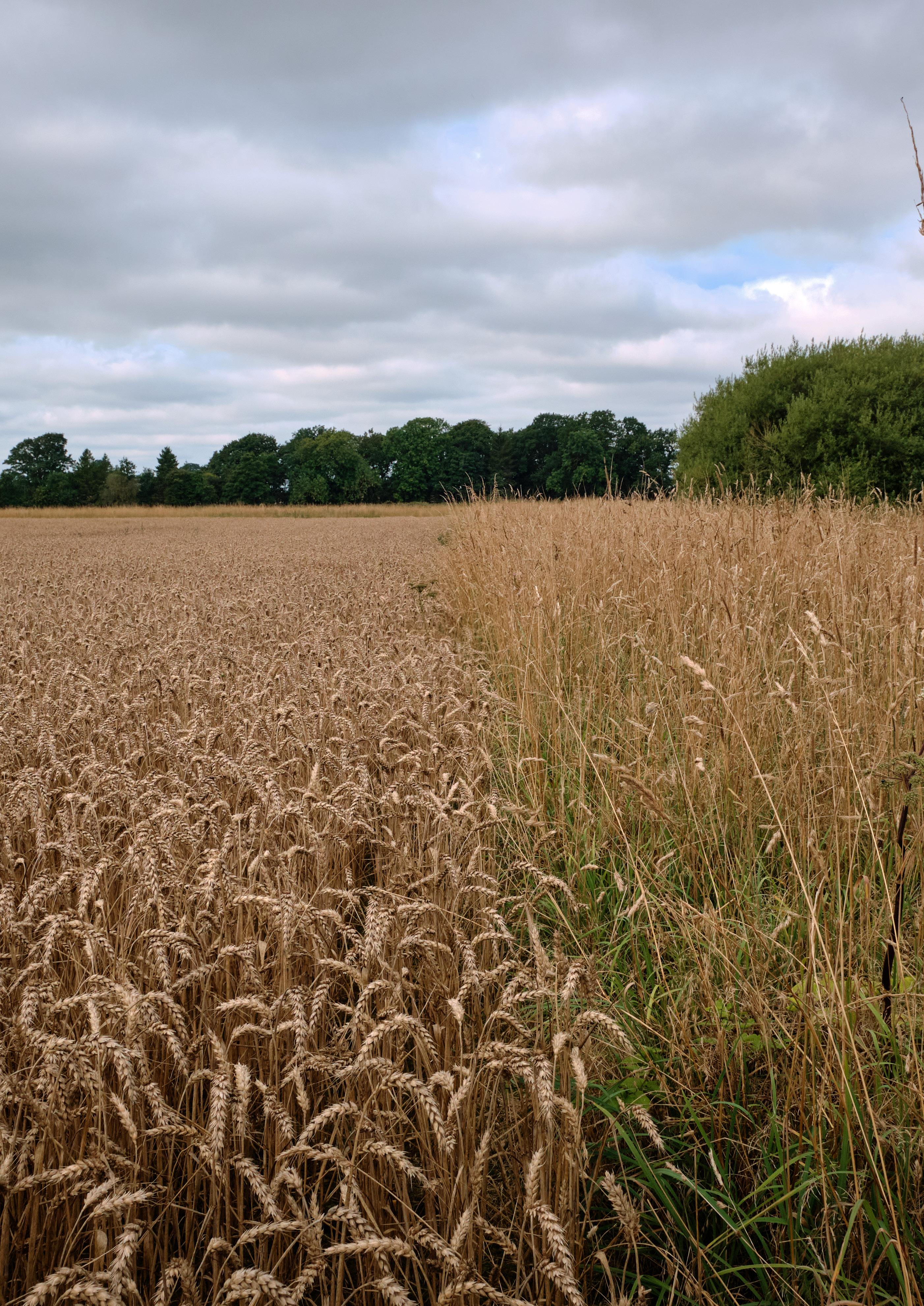
Fertiliser was purchased forward at a cost of £450/t, ahead of the unforecasted rise in fertiliser costs and demand shortage.
Yields overall were better than first budgeted, but the lack of moisture content restricted the potential.
The significant and unforeseen rise in variable and fixed costs throughout the season, put pressure on the overdraft facility and meant cashflow management was imperative.
To find out more about our model farms please contact a member of our Farm Business team.
Payment Scheme
Stewardship Mid-Tier Scheme Sustainable Farming Incentive Labour 2 family members
seasonal harvest worker
**AN - £750/tonne Other Income Basic
Countryside
1
Contractors are brought in for baling only.
The GSC Grays Farm Business team runs model farms across key sectors, representative of a typical farm that we might expect to see in the North.

Our model arable farm is a notional farming business for which we prepare certain financial information to allow us to track the profitability trends of the farm business and to assess the implications of change, whether that be market prices, input costs or management changes which might be introduced into the business. At the start of each financial year, we prepare a budget looking forward and after the year end, we prepare management accounts to determine the financial results.
In this issue, we will focus on our arable model farm and how it has fared, with rising input costs and initial reductions in the Basic Payment Scheme (BPS). In addition, we will look forward to 2023.
MARKETING
The farm uses the rule of thirds marketing strategy. A third of winter wheat was sold forward at £180/t, a third sold at harvest at £300/t and a third marketed post-harvest was forecasted on average at £250/t. An overall average of £243/t was achieved, allowing the business to manage risk in relation to volatile output prices, which have been a key factor of the marketplace this year. Whilst the prices achieved will not be the highest, the farm has achieved a good average sales price for wheat.
MITIGATING THE REDUCTION IN BPS
The arable model farm benefits from a large Basic Payment income. In anticipation of the reduction of BPS and to mitigate market volatility, steps have been taken to reduce risk and the dependency on inputs.
A new SFI agreement was put in place on an introductory level to run alongside the CSS scheme already in place.
The farm is considering adopting regenerative practices with a focus on soil health to maximise the output of current resources whilst reducing input. Next year this will include cover cropping and in future the possibility of a direct drilling method.
We have prepared budget forecasts to identify expected financial performance of the business for the next 12 months and on which to stress test potential changes which might be introduced such as cropping rotation changes, the incorporation of livestock into the rotation and the increasing use of Environmental Schemes. The key objective is to see if we can improve profitability, particularly as the BPS declines.
LOOKING FORWARD TO 2023
Profitability is looking good into next year. However, we are concerned that rising variable and fixed costs for key inputs such as fertiliser, sprays, labour, fuel, and interest charges will start to erode profit margins. This combined with further reductions in the BPS are giving cause for concern.
The impact of rising input costs is having a significant effect on cashflow, and our forecasts indicate higher finance requirements in excess of the existing £250k facility available. The need for good budget preparation is a vital part of day-to-day management of this arable farm. With reports of agricultural inflation running at more than 30% or more, we believe it is vital that this arable model farm continues to challenge the cost structure and look for new opportunities to maintain a competitive edge.
JOSH THOMSON SENIOR FARM BUSINESS CONSULTANT
01423 740120
jrt@gscgrays.co.uk
GSC GRAYS NOVEMBER 2022 5
FARMING THROUGH INFLATION
How does inflation impact the rural sector and how do we mitigate it?
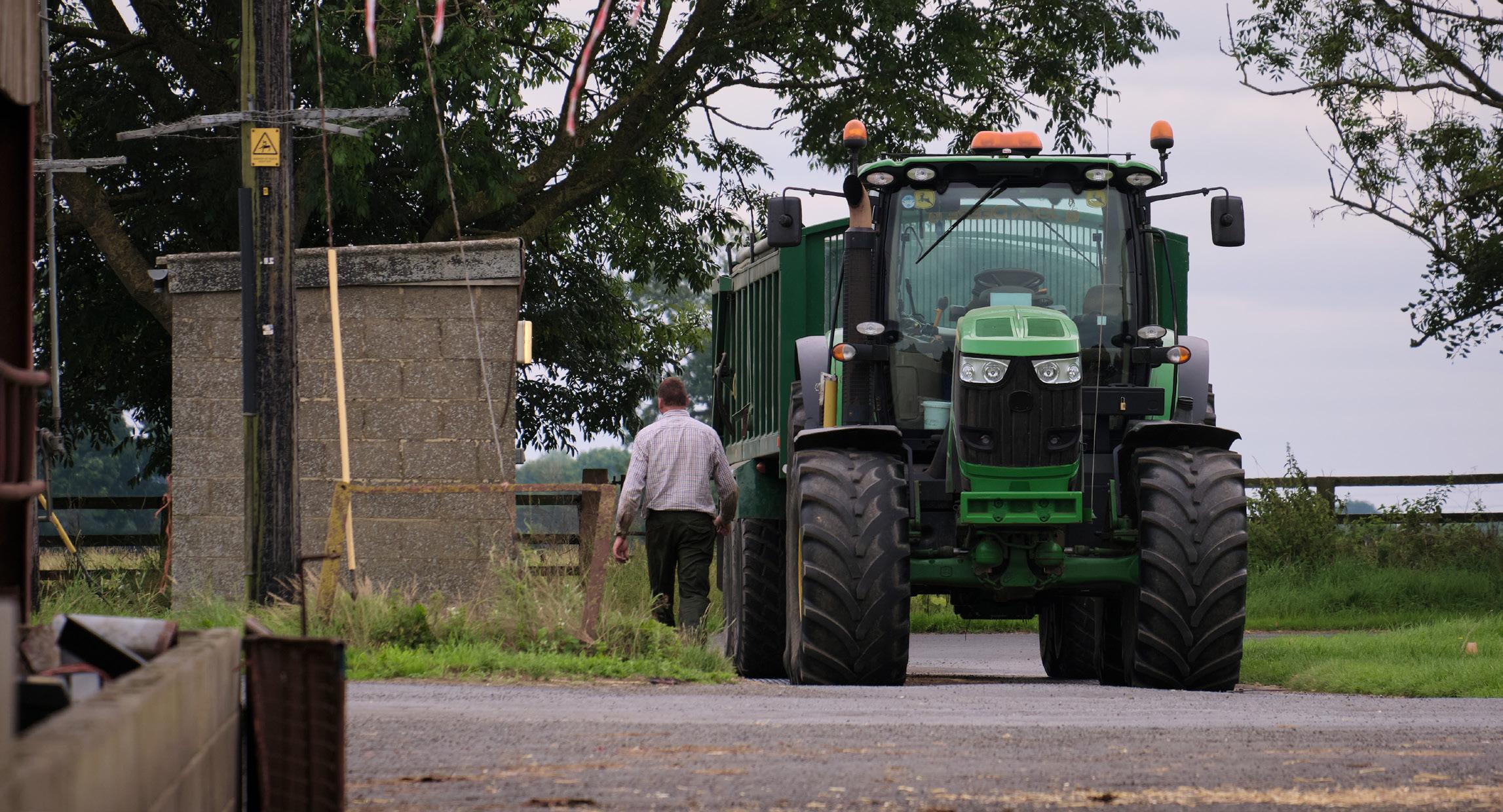
Inflationary pressure across all agricultural sectors is forcing farmers to take another look at their businesses. With the old BPS system still supporting those who prefer the status quo, many are unprepared to face a future with higher interest rates, higher input costs and greater uncertainty.
FORESIGHT IS A WONDERFUL THING
Those with an eye to their business and the cashflow flexibility to do so, will have seen inflation on the horizon and made buying decisions ahead of time to take advantage of lower input costs earlier in the year. This spring a number of clients took the opportunity to look at what they would likely be putting in the ground this Autumn and bought forward to lock in the prices at the time. This wasn’t just fertiliser but agrochemicals too. Since then, the cost of those
same products have increased substantially, so these farmers are already ahead of the game in being able to achieve a higher gross margin through the savings in input costs.
Many sectors historically have bought close to the time they use certain inputs, due to storage or cashflow issues. This leaves them especially vulnerable to inflationary pressures. Storage may be a problem, directly on farm, but working with friends and neighbours in other sectors may be a solution given the potential savings that could be made. One livestock farmer has joined forces with an arable neighbour to buy some of his fertiliser requirement for next year, which will be stored at the arable farm until the spring. The “cost” of the storage will be worked off in the amount of FYM led back to the arable farm from the livestock farm.
Cashflow is also an issue to many, with businesses not having the cash available to buy inputs when they are cheapest. Again, solutions can be found with many merchants being prepared to offer delayed payment terms or short-term credit arrangements, which allows the farmers to benefit from the lower costs, whilst paying for them at a time that better suits the cashflow of the business.
GSC GRAYS 6
REDUCED INPUTS = LESS INFLATIONARY PRESSURE
Another option that could help weather the inflationary storm better is adopting regenerative farming practices, where reduced inputs result in reduced expenditure on things that are inflationary. Using less fertiliser, feed, fuel, agrochemicals and running less machinery mean that yields and gross margins can be lower as fixed costs are substantially reduced. The soil and resulting crops are more robust, mitigating disease resistance and soil degradation.
arable farmers, reducing inputs and buying forward are an obvious solution. Whereas livestock farmers might want to consider the way they are selling livestock. For example, could they be selling their cattle as stores and giving others with a different business model the opportunity to finish them for market.
Many farming enterprises will have long term borrowings. How these long term borrowings are managed may well enable further savings to be made, or at least de-risk the business to further rises in the base rate. Options include moving some of the borrowing onto a fixed rate loan or moving core debt currently sitting on the overdraft onto a loan, which if nothing else, reduces the cost of the annual arrangement fee. Speaking to your Bank Manager about the options available would be the obvious starting point.
We are able to offer free farm business advice as part of DEFRA’s Future Farm Resilience Fund. Please get in touch to see how we might be able to help you.
The downside is that building these systems takes time as part of a long-term strategy for the business and the rewards are not immediate.
The reality for most farming enterprises is that the solution will be a combination of all of the above. While inflation is a shock to the whole farming system, it is also an opportunity to take a critical look at the business and reduce costs/look at innovative solutions that would be overlooked in times of stability. For
 ROBERT SULLIVAN
ROBERT SULLIVAN
GSC GRAYS NOVEMBER 2022 7
FARM ECOSYSTEMS ARE LIKE PEOPLE AND THE COMMON COLD. WHEN YOU ARE RUN DOWN AND UNDER THE WEATHER YOU ARE MORE SUSCEPTIBLE TO THE COMMON COLD AND MORE LIKELY TO SUFFER COMPARED TO WHEN YOU ARE IN GOOD HEALTH AND YOUR ONLY SYMPTOM IS A RUNNY NOSE.
THAT’S ALL VERY WELL, BUT WHAT SHOULD I BE DOING NOW?
DIRECTOR 0191 303 9541 rjs@gscgrays.co.uk
FUTURE PROOF FARMING
5
Farm resilience and sustainability can be considered under three key aspects:
1. The ability to withstand market volatility whilst ensuring produce is meeting the demands of buyers and consumers.
2. The environmental impact of the farming business.
3. The longevity of the business, both for the current farmer and the next generation.
Below are 5 steps farmers can take to improve the resilience of the business in the coming years.
STEP 1: PRODUCE A WHOLE FARM BUDGET
For understanding both the current position of the business and where the business is heading, the farm budget is an essential tool for informing farm strategy,
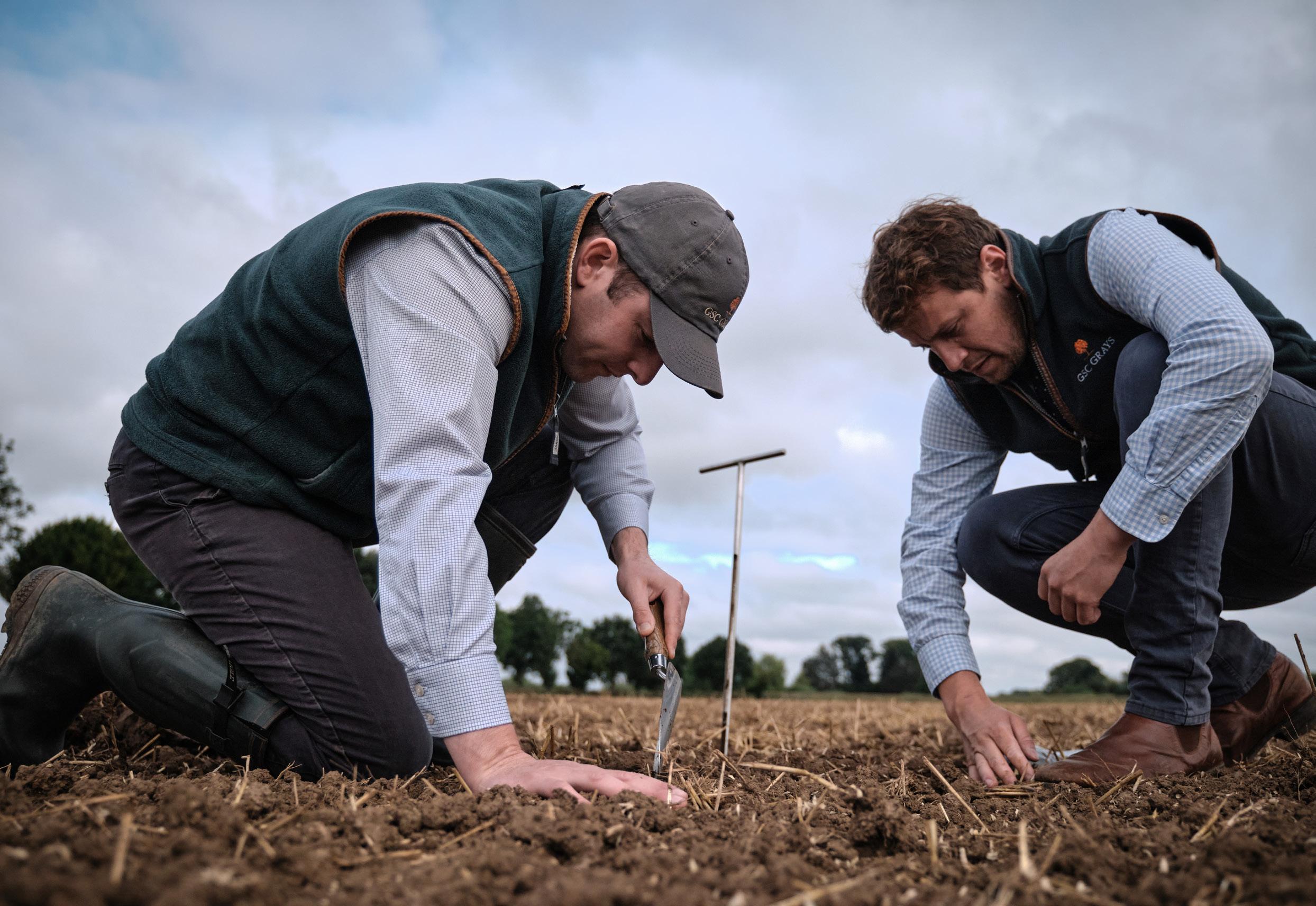
now more than ever. Farm businesses, currently faced with the phasing out of BPS payments, volatile commodity markets, and more extreme weather conditions can use the farm budget as a tool to plan for various eventualities over the coming years, adapting their business to the new markets and climates.
We are often faced with the question: ‘why budget when markets are this volatile?’
GSC GRAYS 8
WHILST BUDGETS ARE A PREDICTION AND NOT A CERTAINTY, CREATING A PLAN AND THEN TRACKING THE BUSINESS PERFORMANCE AGAINST IT IS THE BEST WAY TO MAKE INFORMED DECISIONS THROUGHOUT THE YEAR.
steps farmers can take now to make their farm more resilent and sustainable
Rather than waiting for issues to present themselves, farm budgets and budget monitoring allows businesses to foresee issues whilst there is still time to react to them.

STEP 2: ASSESS THE FARMING SYSTEM
Whilst traditional practices have served a purpose for a long time, and for some farms they are still a good option, others should look at new production methods to make sure they are achieving the best long-term productivity from their land and buildings, as well as meeting the demand of their target market.
Whether this is adopting regenerative agriculture techniques to preserve moisture in the soil, or investing in livestock housing to improve welfare standards, assessing whether the system is still the best option for the current climate and markets is a key factor in developing farm resilience.
STEP 3: DIVERSIFY INCOME STREAMS
Soaring inputs costs combined with reduced BPS payments mean that cashflow management will be a key priority for farm businesses over the coming months and years. One way to reduce cashflow pressures is to diversify income streams. This can come in various forms such as adoption of environmental schemes, non-farming diversifications, changing the marketing strategy of stock and produce, or investment into an enterprise which provides regular cash injections such as B&B pigs.
STEP 4: SUCCESSION PLANNING
A topic not talked about enough, succession planning is key to ensuring the sustainability and longevity of any family farm. Asking the key questions early helps to inform decisions such as investment in different enterprises, the roles individuals would like to take up, and the division of assets at the point of succession. Having a clear plan on paper, agreed by all parties, ensures the smooth transition at the point of succession and ultimately, the continuity of the business in the long term.
STEP 5: CARBON AUDITING
Whilst the market for trading carbon sequestered on farm is still developing, the markets for ‘carbon neutral’ or ‘low carbon’ produce is taking off. Over the coming years we will see a large number of buyers listing a carbon audit within the criteria for their suppliers.
However, carbon audits cannot be completed overnight. More often than not, businesses are not currently collecting the information required to complete an accurate carbon audit, therefore, the first year of the process often involves putting these measures in place. Beginning to carbon audit now will ensure produce is fit for purpose in the years to come, as well as identifying areas where inputs, emissions and ultimately costs savings can be made. Furthermore, as and when carbon markets develop, if a business has a good understanding of their carbon position, capitalising on carbon sequestered will be far easier.
JAMIE CHARLTON
FARM BUSINESS CONSULTANT 01748 897617
jhc@gscgrays.co.uk
GSC GRAYS NOVEMBER 2022 9
WHATEVER PROVES TO BE THE MOST SUITABLE APPROACH FOR THE BUSINESS, REDUCING THE SEASONALITY OF CASHFLOW BUILDS RESILIENCE INTO THE BUSINESS MODEL.
FUNDING FUTURE FARMERS
‘Oxbury New Gen’ offers a new approach to finance specifically for new entrants to farming
One of the major barriers for young people and new entrants to farming is access to finance. Oxbury Bank are changing the traditional approach from banks, providing free business consultancy in addition to funding, to help support new farm businesses entering the industry.
Having assisted with multiple lending requests for farm businesses, I fully understand the barriers facing young farmers and new entrants to the agricultural sector. New and ambitious farming ventures typically require a large amount of capital for land, equipment/ infrastructure or livestock purchases, which in turn, comes with a security requirement from lenders that many young farmers and new entrants can struggle to provide.
ENTER ‘OXBURY NEXT GEN’ - FUNDING A NEW GENERATION OF FARMERS

‘Oxbury Next Gen’ is a new scheme launched by Oxbury Bank, a bank that is dedicated to backing Britain’s farmers and farm businesses. It offers a new approach to lending that will support a new generation of farmers by providing help and guidance from independent national and regional farm advisory services in addition to funding the venture.
GSC Grays are one of the small group of trusted professionals providing the expert farm business advice in both the application process and crucially, on an ongoing basis in the form of quarterly meetings, that will help create, and then track the delivery and progress of the business plan for a period of 3 years. Such on-going advice and support will be crucial for businesses to ensure the serviceability of loans as interest rates continue to rise.
GSC GRAYS 10
Nick Evans, Chief Executive for Oxbury explains the bank’s rationale behind their new funding approach;
“Oxbury is completely focussed on backing Britain’s farmers and farm businesses and understand the very specific challenges facing the industry over the years ahead, in particular in ensuring we grow and develop the next generation of farmers and farm businesses. Without new entrants our collective need for a strong, resilient farming and food supply chain will be difficult, or even impossible, to maintain.”
A TIMELY APPROACH
This is a timely new approach that complements the direction the Agricultural Transition Plan is expected to take to support new/young entrants to the industry. As a firm we are also seeing an increase in opportunities for new entrants in the form of Contract Farming Agreements and Share Farming Agreements and more, as landowners look to restructure how their assets are managed and an older generation of farmers consider retirement options.

With the average age of UK farmers now at 59, food security being at its highest place on the political agenda since the end of WW2, and the industry as a whole in its biggest period of transition in living memory, it is fantastic to see Oxbury Bank taking this approach. We look forward to working with young/new entrants through the scheme in tackling the challenges and seizing the opportunities that lay ahead.
DETAILS OF THE SCHEME
Who is eligible?
• You must be a new business start up.
• Your proposed business plan must have agriculture as the core business activity.
• You must be between the ages of 18 – 40 at the time of application.
• You must have relevant practical experience working in the agricultural sector.
• You must not be earning an economic wage from your own farm.
Some examples of what Oxbury New Gen can fund
• Buying into an existing partnership or sole trader business.
• Purchasing livestock.
• Funding infrastructure improvements or infrastructure purchases.
• Funding machinery purchases.
• Purchasing initial inputs.
• Purchasing land and buildings.
• Living costs while getting the business started.
• Tenants’ capital and initial farm rental payments.
Funding
Oxbury will provide up to 100% of the financing required - depending on the business plan the applicant may not need to input any finance themselves.
For more details visit: www.oxbury.com/new-gen
SAM DALE
RURAL ASSOCIATE DIRECTOR 07973 866477
sjd@gscgrays.co.uk
GSC GRAYS NOVEMBER 2022 11
ON FARM RENEWABLES
The UK farming industry is going through a dynamic period of uncertainty with the removal of direct agricultural subsidies, exceptional market volatility, a national economic recession and ever-increasing input costs brought about by global pressures and rising inflation.
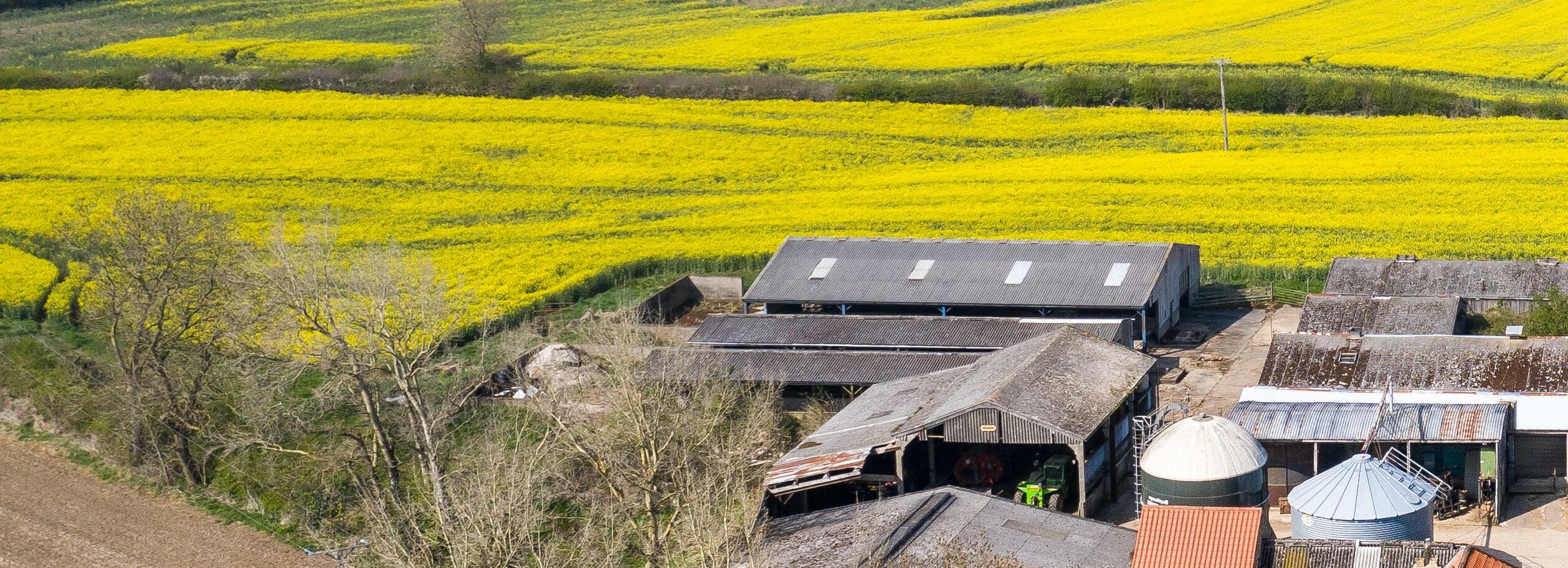
Figures stated in the Farmers Weekly suggest that average electricity costs for farming businesses are set to increase by ‘76% between 2021-2022’. This is an alarming figure, particularly for energy intensive farming operations such as pig and poultry units, and one that significantly threatens future farm profitability.
The renewable energy sector is one of the fastest growing industries in the UK. Over the last few years, large scale solar arrays have become a prominent feature of the UK’s energy mix, exporting vast amounts of electricity into the grid. However, more recently, there has been noticeable interest from farming businesses looking to invest in farm-scale renewable energy schemes to meet their own energy consumption and to mitigate energy price volatility or fuel availability.
Despite the phase out of Government incentivised schemes, such as the Feed-in Tariffs (FIT) and the
Renewable Obligation Certificate (ROC) scheme, renewable energy technologies are still economically viable solutions. Economies of scale and technological advancements have produced systems that are more efficient and affordable. Given that electricity costs are anticipated to continue to rise in the short-term, these schemes are becoming more attractive by the day.
For example, a roof-mounted Solar PV system typically costs approximately £1,000 per kW to install (pricing dependent on project scale). Based on future electricity price trends, the average payback period can be as short as 3-4 years for some schemes. Rooftop schemes can also benefit from planning support via permitted development rights.
In recent years, the Government’s Smart Export Guarantee has provided little incentive for exporting excess power to the grid due to export rates of around 5.5p per kWh. However, more recently we have seen this figure triple which has provided additional viability to some schemes where excess power is generated at certain times of the day.
GSC GRAYS 12
WHEN DESIGNING A SCHEME, THE MAIN GOAL SHOULD BE TO OFFSET THE FARM’S OWN ELECTRICITY COSTS, RATHER THAN SELLING POWER BACK TO THE GRID.
Today we benefit from a wealth of technology types which can be cleverly combined to add value to any project. For example, a solar PV system could be combined with an air or ground source heat pump which uses the ‘free’ electricity to save on heating fuels. Adding suitable battery storage schemes could provide a near self-sufficient energy system for the whole farm.
Another important factor to consider is the carbon footprint of the farm business. The agricultural sector is a significant contributor to national greenhouse gas emissions and we are seeing Government policy and public pressure starting to take aim at farmers to reduce their carbon output. A time may come where farms with lower carbon footprints might have better access to finance and commercial markets.
PROFESSIONAL GUIDANCE
There are several potential pitfalls when creating a renewable energy scheme. In some cases, individuals have been ill-advised and sold schemes that don’t perform as had been forecast, or which don’t meet the energy demands of the specific farming business.
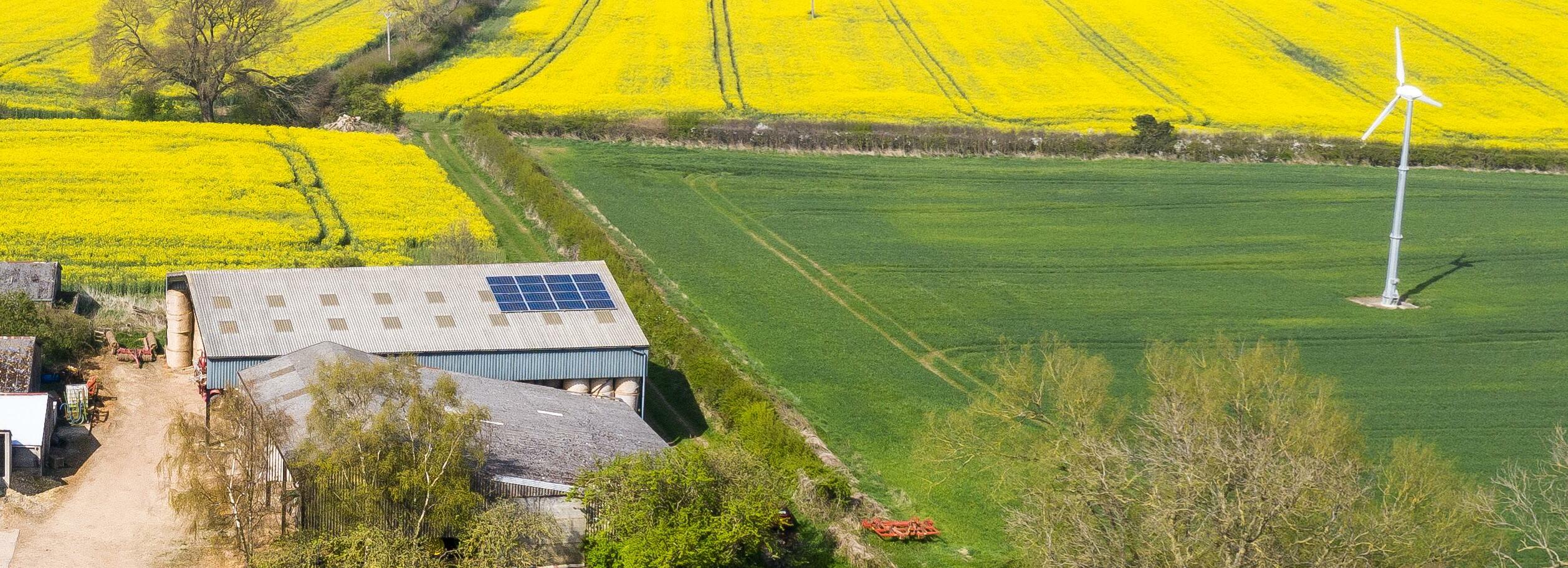
It is critical that a project is tailored to the annual energy profile of the business and takes into consideration the future growth of the specific farming operation. Furthermore, any projected payback periods need to be determined using realistic data, observing future market trends.
Ultimately, in many instances, seeking professional guidance is advised to ensure that the specific needs and objectives of each farming business are considered.
GSC Grays has a breadth of knowledge and experience in the renewable energy sector, which allows us to add value by sense checking data against the specific current and future requirements of our farm business clients. Our services range from producing feasibility studies and due diligence reports for project financing, planning consultancy through to project management.
For a free initial consultation please contact Will Pheasey MRICS.

GSC GRAYS NOVEMBER 2022 13
WILLIAM PHEASEY RURAL PRACTICE SURVEYOR 07984 072842 wjp@gscgrays.co.uk
PAYMENTS BY RESULTS
Is this the future of agri-environment funding?

In the years leading up to the UK’s exit from the European Union, an EU-funded pilot study into a ‘Results Based Agri-environment Payment Scheme’ (RBAPS) was trialled in England. The findings seemed positive, and when Gove started to introduce a new direction for England’s agricultural policy in 2018, it seemed that payment by results were the favoured payment structure.
Fast forwards four years, and the payment principles for the Sustainable Farming Incentive are resolutely area-based. So why do DEFRA seem to be stepping back from results-based payments in ELM?
THE RBAPS PILOT STUDY
The RBAPS pilot ran from 2016-18, operating in Wensleydale (on species rich meadows and grassland for breeding waders) and Norfolk/Suffolk (delivering plots of winter bird food and flower-rich mixes for pollinators). Farmers had complete flexibility on how to manage their land, but the annual scheme payment was linked to their level of success in delivering specific biodiversity outcomes. The project tested the impact of an outcomes focussed approach on;
• Farmer motivation to deliver better quality habitats for wildlife.
• The accuracy of self-assessment results.
• Cost effectiveness of RBAPS.
• Participant and stakeholder attitudes.
FARMER FEEDBACK
The pilot found that farmer attitudes towards the results-based approach were positive, with participants commenting that they preferred to have
freedom to take their own decisions about habitat management and draw on local knowledge and experience. Some reported that the guidance and training provided through the pilot, along with the results focus, improved their understanding of habitat management. The environmental outcomes achieved were also better than similar sites managed under conventional schemes.
WHAT’S CHANGED?
In early discussions regarding what we now know as ‘ELM’, payment by results was mentioned often and it seemed that this was likely to be the payment mechanism that DEFRA favoured. Over time however, this approach appears to have been watered down.
The structure of the Sustainable Farming Incentive, while providing more flexibility than Countryside Stewardship, is still prescriptive and payments are area-based. We also know that Local Nature Recovery will adopt an ‘income foregone plus’ approach to setting payments, which is an adaptation of the same principles that have been used to set Environmental Stewardship and then Countryside Stewardship payments for decades.

GSC GRAYS NOVEMBER 2022 15
THE CHALLENGES OF RESULTSBASED FUNDING SYSTEM
Our experience in managing projects and consulting with farmers as part of the ELM Test & Trial Programme has given us some insight into why results-based payments might be difficult to deliver, both for DEFRA and for the farmer.

1. RISK
If payments are linked to outcomes, the risk assumed by the farmer is greater. Even if you were to follow best practice guidance to the letter, in some cases results can be compromised by factors beyond your control such as weather events or the practices of neighbouring landowners.
Arguably, farmers are used to managing risk and being at the mercy of the weather. However, experience suggests that the relative predictability and security of stewardship payments is a key reason that many farmers consider entering the scheme – as it provides a steady low risk source of income that can help make their business more resilient in difficult years. Without this, participation is likely to suffer.
2. ADVICE AND GUIDANCE
One of the attractions of a results-based approach is that it would give farmers the ability to adapt recommended management according to local knowledge, their farm system or what they see working on the ground. We know this is something many farmers would welcome - a desire for greater flexibility has been raised time and again in our conversations with farmers during Test and Trials we are involved in.
However, in order to make sure that all participants in the scheme have a fair chance of achieving good results and hence securing higher payments, and to ensure DEFRA meets targets for environmental recovery, each farm would need access to advice and best practice guidance. Ideally this would be provided by a network of well-informed, local farm advisors, offering consistently high-quality advice.
GSC GRAYS 16
DEFRA HAVE INDICATED THAT THEY ARE COMMITTED TO IMPROVING ADVICE AND GUIDANCE PROVIDED THROUGH ELM, BUT THERE IS A LONG WAY TO GO.
3. DATA
It’s stating the obvious, but to set payments according to results, you need to know what the results are. Data collection and reporting are critical in a results-based system, and while the RBAPS pilot had some success with self-assessment (i.e. land managers surveying their own land and reporting results), it requires time and training and cannot be the sole method of data collection.
Once again, resourcing a national monitoring programme of this nature would be a challenge. Technology could provide a solution here – remote sensing technologies are developing at an exciting rate. If both DEFRA and agreement holders can be persuaded to trust data collected by drone or satellite, it may soon be able to provide transparent, objective assessments in a time and cost-efficient manner.
4. BUDGETS
Where money is concerned, most people prefer a degree of predictability. Both farmers and DEFRA are working to budgets and linking payments to outcomes is likely to make it more difficult for both sides to plan ahead. Indeed, this was one of the findings of the RBAPS project, though the final report does observe that in time, “average performance levels would emerge which could be used for budget planning purposes.”
5. INTERACTION WITH PRIVATE OPPORTUNITIES
We know that DEFRA are keen for farmers to access private finance for environmental projects, so they are designing the Local Nature Recovery and Landscape Recovery Schemes to be used alongside private sector funding – so called ‘blended finance’.
In many cases, private sector opportunities will be inherently ‘outcomes linked’ – for instance a landowner might secure income from selling carbon credits into the voluntary carbon market, or biodiversity units to a local developer seeking to meet their ‘Biodiversity Net Gain’ requirements. In both cases, payments received are linked to quantified outputs, and, just as for sales of agricultural outputs, the value of ecosystem services on the open market are likely to fluctuate.
If DEFRA wish to set up a system of agri-environment support that compliments private sector finance, they may be considering a lower risk, management-linked, payment approach to offer a degree of security that the emerging markets cannot offer.

WHAT DOES THE FUTURE HOLD FOR AGRIENVIRONMENT FUNDING?
Many of these challenges were highlighted in the RBAPS end of project report, and no doubt many other test projects have encountered similar challenges. This is not to say that payments by results is completely off the cards, however.
The recent move to re-focus stewardship options to be more oriented around aims, as opposed to prescriptions, may indicate that DEFRA still have some appetite for moving into a more results-based system, as do many of the farmers and land managers we talk to. But if participating in the Tests and Trials has taught us anything, it’s that ‘public money for public goods’ is not as simple as it sounds.
With only a couple of years left before the new schemes are rolled out nationally, DEFRA have got an unenviable challenge ahead of them.
HEAD OF ENVIRONMENT & SUSTAINABILITY 01748 897603 has@gscgrays.co.uk
GSC GRAYS NOVEMBER 2022 17
HOLLY STORY
IS YOUR LAND RIPE FOR HOUSING DEVELOPMENT?
The Government’s housebuilding target, set out in the 2019 Conservative manifesto, is for 300,000 homes a year by the mid-2020s.
By their own admission they have fallen well short of achieving this, with 242,700 net additional dwellings in 2019-20, falling to 216,490 in 2020-21.
However, there is no reduction to the commitment from the government (or Labour) to this target. As such, you may well be considering the development potential of your land for housing.
There are a number of factors to consider before approaching a volume house builder.

SIZE MATTERS
At a site level, size really does matter, so the first thing to establish is the Net Developable Area i.e. how much of the site is physically capable of housing development. This excludes land containing particularly sensitive habitats, areas of flooding/contamination, or steep inclines for instance. Furthermore, infrastructure such as access roads; public open space and other community facilities; balancing ponds for surface water drainage, sub-stations and the like also need to be accommodated and should therefore be excluded from the calculation. As a rule of thumb, I work on the basis that the Net Developable Area should be around 75% of the total site area.
SITE YIELD
The next consideration is the yield that the site and the local market will sustain. A safe benchmark is 12 to 14 houses/Net Developable Acre. On the basis that a volume house builder will have a minimum requirement of around 60 units, you need to be looking at a site with a gross area of 6.5 to 7 acres.
GSC GRAYS 18
LOCATION, LOCATION, LOCATION
Unless you are in the extremely fortunate position of having a housing site at a scale that is standalone, your land will be developed as an extension to an existing residential area. You, therefore, need to consider how well related your land is to the existing settlement. Questions to ask are:
• Are the local amenities accessible on foot or by bike?
• Is the existing residential boundary permeable i.e. is it punctuated with openings such as footpaths which offer the benefit of an interrelationship between existing and new houses? If it is an unbroken, close-boarded fence, are there opportunities to break through?
• Can your land offer something new to the existing residents? Is there a lack of informal play space or can you create a circular walk by dedicating public open space within your development?
• How significant will the impact of development be on the open countryside? Clearly, the more sensitive the landscape, the greater the harm caused by development. Can you readily mitigate this impact through hedgerow management or new planting for instance?
THE DEVIL IS IN THE DETAIL
While the above is useful guidance on how attractive your land is for development, it is for nought without a framework of supportive planning policies.
At a basic level, there are three tiers of planning policy.
• Neighbourhood Plans are made at the Parish Council level.
• Local Plans are adopted by Local Authorities for the area within their planning jurisdiction.
• National Planning Policy and guidance is set by Westminster and articulates the prevailing political thinking.
Assessing planning policy can be complex and will likely require professional input. The Local Plan making process is consultative. As such, it is possible for you to make representations that shape the future planning policies which you will have to work with.
Sites that you might consider as being ready now have probably benefitted from some form of promotion in the past. Where that has happened, the planning merits of the site should be known or discernible where it is not yet allocated.
Your site might benefit from a catch-all development policy, but the Holy Grail is site specific policies that allocate your land for housing.
SO HOW RIPE IS YOUR SITE?
If you consider the above and have a clean bill of health on all fronts, you have a site that is ripe for housing development, and you should consider selling it straight away. If none of the above considerations are favourable, then your site is most unlikely to be attractive to a volume house builder.

As is most often the case, your site is likely to be somewhere between the two and would benefit from expert advice to determine whether there is a market for your site as it stands (as there often is), what work is needed to ‘ripen’ it fully, and which of those steps are beneficial for you to take and which, (if any), are best left to a buyer.
Speak to our Planning and Development team if you need help to determine the viability of your land for housing development.
GSC GRAYS NOVEMBER 2022 19
CALUM GILLHESPY DIRECTOR 01833 694931 crg@gscgrays.co.uk
AGRICULTURAL TENANCIES
Could a tenanted holding back in-hand be worth two in the bush?
The current volatility within the UK agricultural sector may well prove to be a watershed moment for some farmers and farming businesses, leading to both landowners and tenants giving serious consideration to agricultural tenancies and the potential opportunities and threats presented by terminating existing agreements.
The decision to terminate an agricultural tenancy will not be taken lightly. Landowners may well be considering opportunities relating to the future use of any properties, buildings and land prior to an existing tenancy coming to an end, which in turn may lead to the landowner taking a holding back.

Some farmers may be farming due to a sense of duty; being released from this allows a fresh start and the opportunity to consider careers and life choices away from the holding.
Regardless of who instigates the termination of the tenancy, the pros and cons of a holding becoming vacant require careful consideration before action is taken.
GSC GRAYS 20
WHAT OPPORTUNITIES AND FOR WHO?
From the landowners’ perspective, the sum of the parts may equal more than the whole. A vacant tenanted holding will allow the landowner a chance to consider the future use and potential separation of any residential properties, buildings, and land. This may create value where previously this was limited and can allow for alternative opportunities to be explored to both boost and diversify income streams. Potential land swaps - or the surrender and re-granting of tenancies with existing tenants who border the vacant holding - could be beneficial from both a land management and tax planning point of view.
The decision to re-let the holding will be particularly attractive to new entrants who can bring fresh ideas and perspectives to the holding. It will offer opportunities for neighbouring tenants who may wish to grow their businesses by taking on properties, buildings, and land immediately next to, or near to, their existing holdings. This can also help to spread costs and to allow for succession planning within their businesses.
THREATS AND CONSIDERATIONS
If the landowner makes the decision to terminate the tenancy agreement and the holding has benefitted from much investment from the tenant, a claim for tenant rights could be brought about. Depending on how the investments have been recorded, this could prove to be very costly for the owner. As such, careful consideration should be given to the timing and whether it will present more problems than solutions or opportunities.
Conversely, if the holding has suffered from a lack of investment by the existing tenant, a dilapidations claim can be brought against the tenant by the landowner. Depending on the levels of investment required to meet the terms of the agreement, this can be a very costly and lengthy process, sour relationships, and impact radically on the tenant’s finances at the very end of the tenancy.

Regardless of who terminated the tenancy, if the decision is made by the landowner to re-let, there is an inherent risk that there will be a period of vacancy with no rental income. Given today’s climate of uncertainty, volatility and rising inflation, landowners should be careful to ensure that any proposals that incoming tenants or partners have, are reasonable, sensible, and future-proofed. These ideas should be challenged and stress-tested through a competitive tender exercise and the production of a business plan, to ensure that the proposals are sound.
ENGAGEMENT IS KEY TO SUCCESS
However and whenever the holdings come back to the owners, it is important that all parties involved engage as early as possible to seek the best possible outcomes for all concerned.
SUCCESS WILL RELY ON ALL PARTIES HAVING A PLAN IN MIND, A CLEAR END-GOAL AND WORKING TOGETHER TO ACHIEVE AN AMICABLE RESULT. JONNY
GSC GRAYS NOVEMBER 2022 21
MORRIS RURAL DIRECTOR 0191
303 9543 jwm@gscgrays.co.uk
AGRICULTURAL LAND
Agricultural land investment may not have the financial heritage of bonds and gilts but new entrants in the market motivated by environmental objectives are driving up farm values and a predicted 8% increase this year will eclipse the stock market.
AGRICULTURAL MARKET OVERVIEW
While average farmland values have been largely static since 2016 there are now clear indications of a significant change with prices rising around 6 per cent last year and that means a return on investment to rival other alternatives.
The capital growth prospects for the land market are substantial and far from being an unusual spike in the market, it appears the current rise is signalling the beginning of a sustained upward trajectory.
A lack of supply is fuelling the growth which is great news at a time of uncertainty in the global financial market with land investment showing greater returns than bonds and gilts over the last five years.
We have seen big sums being offered by the corporate sector looking for nature-based carbon offset
models alongside private desires for rewilding and philanthropic net zero goals. One of the fastest rates of growth have been in poorer grass or marginal upland farms with strong demand also pushing up prime and grade 3 arable land or bare land parcels.
Forestry values have been hugely impacted by fiercely competitive bidding from both private and institutional sectors with Scotland bearing the brunt. Prices have been pushed to over 165% of 2020 values causing the Scottish government to look again at their land ownership structure.
Unsuccessful bidders have been forced to look at land on which to plant trees instead and are therefore competing directly with upland livestock farms putting further pressure on marginal land values.
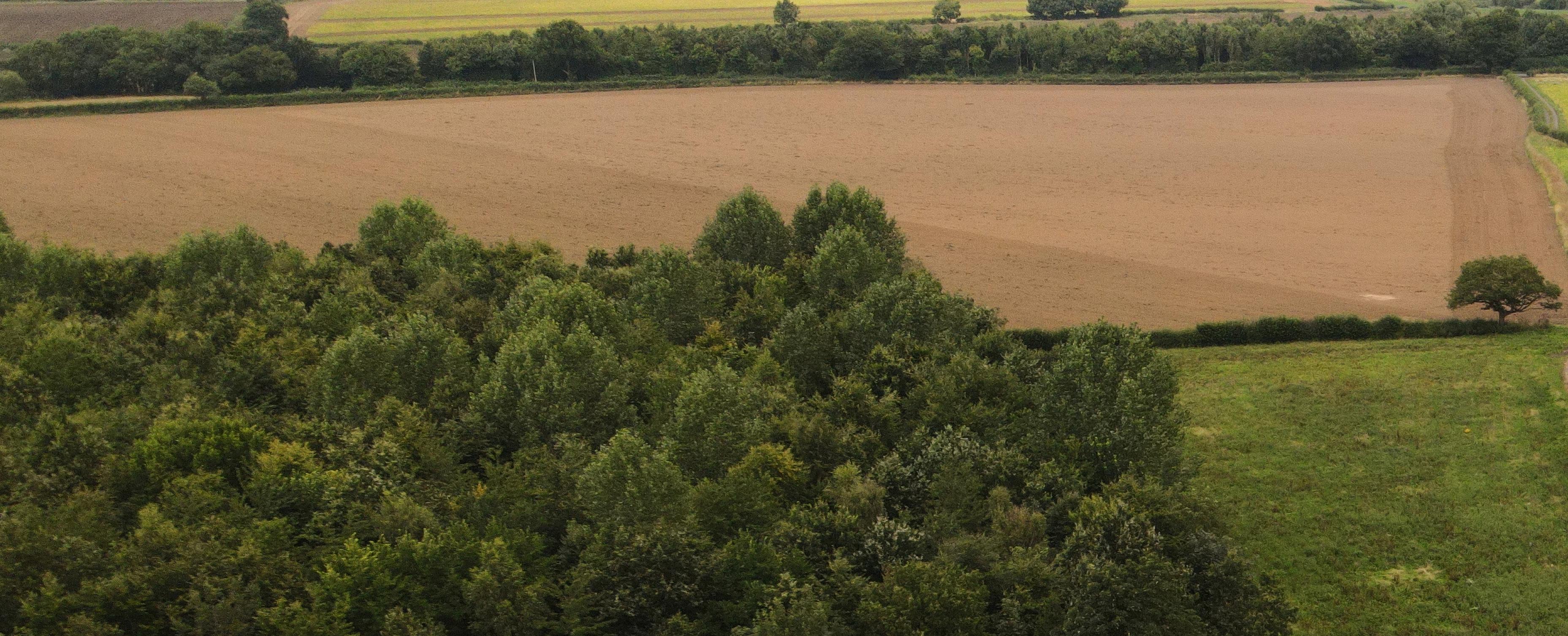
NATURAL CAPITAL
The Natural Capital of land provides a unique solution through carbon capture and other ecosystem benefits to directly impact climate change and biodiversity loss. No other asset class can offer this and therefore prices will surely rise further to meet this increasing demand.
Most compelling is that these more marginal upland farms are likely to be most impacted by the removal of agricultural subsidies, which has helped keep afloat the vast majority of lower grade and marginal hill farms. Natural Capital may well be the answer, either as a way of working alongside private or institutional investors or by cashing in and selling up while competition is at its greatest.
GSC GRAYS 22
An investment opportunity worth considering?
Strongest demand has been for outright ownership because it allows complete control but there is also increasing interest in low risk, safe haven investments in the traditional landlord and tenant space delivering long term yields.
It has been some time since private or institutional investors have looked at this market and more recently, they have been selling off investments to the sitting tenants, raising money to invest in other market sectors. The return on investment has been 11.9% over the last five years, far higher than Government Bonds or Equities.
WEST WOODS FARM
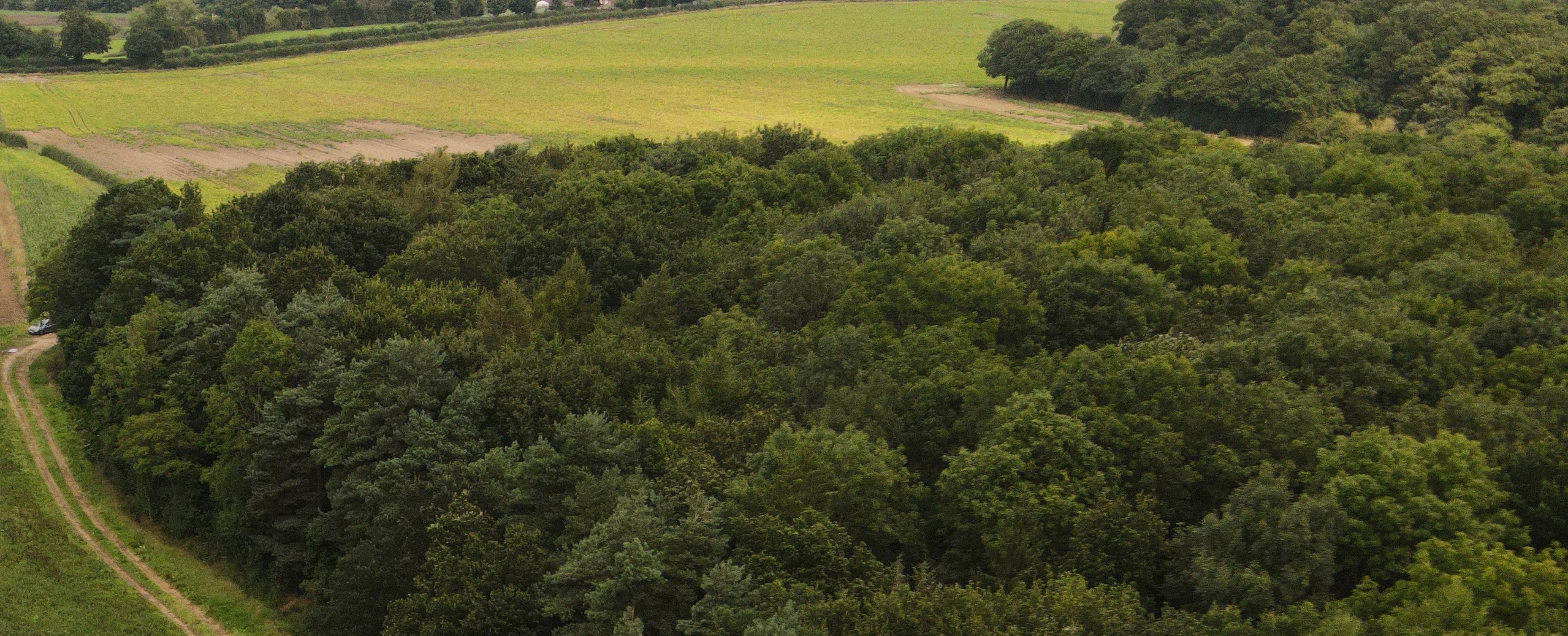
GSC Grays has recently offered West Woods Farm, a first class, 520 acre unit near Wetherby, which was marketed with a first succession Agricultural Holdings Act tenancy yielding at around 1.5% with a £3,350,000 asking price. It attracted considerable attention in the market across England, resulting in multiple bids at a closing date.

We are expecting the next few years to be transitional with the resilience of some farms being tested to the full. The no-subsidy world will put the spotlight on change and Natural Capital and its’ potential to add value and earn income will be pivotal.
There is every reason to expect land prices to increase further as more demand is placed on an already undersupplied market and in England those prices have increased 400% since 1995.

GSC GRAYS NOVEMBER 2022 23
WILL BE MANY WORSE PLACES TO PUT YOUR MONEY THAN IN AGRICULTURAL LAND OVER THE FORESEEABLE FUTURE. JOHN COLEMAN DIRECTOR 01423 590500 jarc@gscgrays.co.uk
THERE
West Woods Farm, Wetherby
FORMAL VALUATIONS
With the Government advocating farm diversification and offering a plethora of environmental schemes and initiatives to farms and rural businesses, it is imperative that consideration is given to the valuation and taxation implications at an early stage to avoid possibly prejudicing asset values and associated reliefs.
The transition from the Basic Payment Scheme (BPS) which is being gradually phased out by 2027, the move towards “Public Money for Public Goods” and the introduction of the Agriculture/Environment Act will inevitably put increased financial pressure on some farm businesses.
Given the fundamental economic, social and political changes we are witnessing, now is an opportune time to “take stock” and have your assets valued.
WHY GET A FORMAL VALUATION?
There tends to be a reluctance to commission a formal valuation which are usually driven out of necessity by death, debt and divorce.
However, there are a multitude of reasons why valuations may be required, including financial planning/accounting, sale/transfer, secure lending, Pension/SIPP and insurance to name but a few.
To quote Benjamin Franklin; “In this World nothing can be said to be certain except death and taxes.” (1789)
Further, a formal valuation of the property assets should be an integral part of any tax/succession planning and farm business review, particularly as many sole traders and partnerships often only have historic values recorded on their balance sheets.

COMPLEXITIES AND CONSIDERATIONS
Valuations of farms and estates by their very nature can be complex matters reflecting a myriad of factors including ownership structure, location, tenure, covenants/restrictions, property type, occupancy conditions, tenancy agreements, land grade/quality, buildings/fixed equipment/infrastructure, property composition/condition and development potential for example.
Consideration also needs to be given to statutory designations and legislative compliance issues such as residential properties failing to meet Minimum Energy Efficiency Standards, Listed building and planning approvals, structural/building surveys, statutory designations, contamination/asbestos reports, slurry storage/pollution control requirements, invasive species, Environment Agency Binding Regulations etc.
GSC GRAYS 24
UK agriculture is currently seeing unprecedented conditions and arguably the most significant changes and pressures on the industry for a generation.
Have you considered what you are actually worth?
Increasingly banks are becoming particularly sensitive to lending on properties which are considered to have issues with less favourable lending terms or reduced loan to value ratios being available.


Environmental & Social Governance (ESG), Natural Capital, Bio-diversity Net Gain (BNG), Regenerative Agriculture, Carbon Capture, Re-wilding etc are also issues which are becoming ever more relevant to rural valuations.
That said, the market is still very much in its infancy, and it is very difficult to attribute any tangible quantum or value to such factors at this juncture. However, as it inevitably becomes more established and mature it will become increasingly relevant to pricing and valuations.
GET PROFESSIONAL ADVICE!
We cannot emphasise enough the need for farmers and landowners to obtain professional advice from land agents, accountants and solicitors.
By adopting a holistic and proactive approach to valuation, not only will you understand what your business is worth, it should help to avoid disputes arising, mitigate any tax liabilities and allow you to plan a strategy to ensure future sustainability and resilience of your farm business.
At GSC Grays we undertake the complete spectrum of valuations and act for banks, building societies, lenders, charities, companies, developers, farms/ estates, institutions as well as private land and property owners.
RICS REGISTERED VALUERS
We prepare formal RICS Red Book valuations for a range of purposes with an emphasis on providing accurate, independent and impartial professional advice.
We undertake valuations of a wide range of property assets including farms, estates, forestry/ woodland, residential properties/country houses, sporting estates/grouse moors, equestrian properties (including racing yards and studs), small scale commercial properties, development sites, telecoms and renewable energy projects (solar and wind) to a name a few!
In valuing assets, we carry out detailed inspections/ measured surveys, extensive due diligence inquiries including title, planning/development, flooding and environmental issues, identifying relevant comparable evidence, conducting valuation calculations and providing the rationale and methodology to provide an informed opinion of value.
EXPERT WITNESSES
We work with solicitors and the Courts when acting as Expert Witnesses either as a Single Joint Expert (SJE) or Part 35 Expert Valuer particularly in matrimonial/ divorce as well as litigation and negligence cases.
Should you require any advice, please do not hesitate to speak to our Valuations team.
ASHLEY DODGSON GENERAL PRACTICE ASSOCIATE DIRECTOR
acd@gscgrays.co.uk
GSC GRAYS NOVEMBER 2022 25
01748 897612
PROPERTY ROUND-UP
SOLD
SOLD
CINDRA HOW FARM RIPON
A highly desirable, small livestock farm with an abundance of environmental, wildlife and conservation opportunities. Situated in the Nidderdale AONB within the Yorkshire Dales National Park.
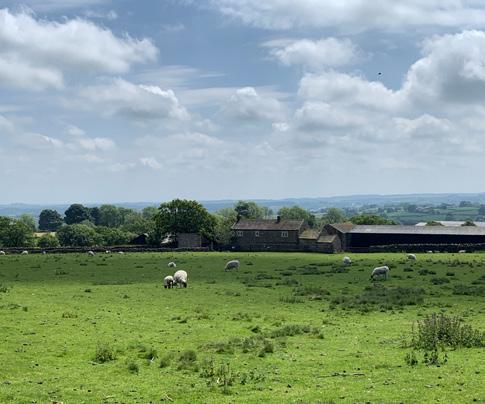

GUIDE PRICE: £1,100,000
UNDEROFFER




THE GRANGE KIRKBY-IN-CLEVELAND


An outstanding manor house in beautiful gardens and grounds in a prime position on the edge of a sought-after village facing south towards the Cleveland Hills .
GUIDE PRICE: £2,250,000
UNDEROFFER
BAY HORSE COTTAGE GREAT OUSEBURN
An imposing detached period village property with large gardens within a popular village, with four bedrooms and four reception rooms.
GUIDE PRICE: £900,000
HERONSWOOD LOWER DUNSFORD
An exceptional detached family home set in beautiful surround gardens with long gated driveway, double garage, five bedrooms, three bathrooms and potential to extend (STP).
GUIDE PRICE: £900,000
GSC GRAYS 26
We have had a hugely successful 2022 selling rural properties of all shapes and sizes. Follow us on social media to keep up to date with the latest properties brought to market:
GSC Grays Estate Agency gscgrays_estateagency
UNDEROFFER UNDEROFFER
KEEPERS BARN BARNARD CASTLE
A superb three bedroomed barn conversion with small paddock, stables and outbuilding situated on the outskirts of Barnard Castle adjacent to the River Tees.
GUIDE PRICE: £525,000
UNDEROFFER UNDEROFFER
4 DRUMRAUCH HALL HUTTON RUDBY
This magnificent first-floor property enjoys outstanding views. There are claims that the living room was used as Winston Churchill’s bedroom during World War II.


GUIDE PRICE: £325,000
RIVER VIEW COTTAGE WORTON
A characterful, detached home with stunning views across the Yorkshire Dales.






River View Cottage occupies a superb plot with rockery style garden and garth in an attractive village location.
GUIDE PRICE: £495,000
THORTON LODGE COTTAGE THORTON RUST
An attractive, stone-built property, occupying a lovely position on the edge of a rural village. Retaining a wealth of Edwardian character the property has been improved to create a cosy and charming home.
GUIDE PRICE: £525,000
GSC GRAYS NOVEMBER 2022 27
LAND AGENCY
A unique view of the changing role of a Land Agent through the decades
The role of a Land Agent has changed dramatically and having spent 50 years in the role I can reflect on a career that involved an escaped rhinoceros, suspected arson on the estate adjoining Balmoral and a murder!

YES, IT HAS BEEN QUITE A LIFE!
When I joined Smiths Gore, I was a fourth generation Land Agent and my son David, Chairman of GSC Grays, is now the fifth and his son, Henry, is the sixth! My career revolved around managing estates across the country, including the Crown Estate and Blenheim Palace. I could have located anywhere but I stayed in Durham for two reasons; firstly the nature of the people and secondly the variety of countryside.
GSC GRAYS 28
One of my most challenging jobs came in 1972 when Lord Lambton decided to follow the lead of Longleat and establish a Lion Park and I had the job of building it on his estate, Lambton Park. It cost £1m and I ran it for ten years but thanks to the oil crisis and soaring interest rates, the finances didn’t work. The Park, which also had zebras, giraffes and elephants, had various problems including baboons getting onto the A1 and an escaped rhinoceros in Fatfield!

I was woken by a call at 4am to be told a rhinoceros was loose in the village but it had been moved into a field. Eventually, after considerable effort, a dart put it to sleep and we moved it back into the Park.
A week later a pensioner came to see me in the office and said, “Mr Gray, I get up every morning at 4am and walk down to the village and one morning there was a rhinoceros and I thought ‘that’s not on’ and so I walked it up to a field and put it there.” So, one man had managed to put the animal in the field which had taken twenty of us and a dart the best part of a day getting it back to the Park!
THE MOST INTERESTING JOB
The most interesting job I ever got came in the late 1980’s via a telephone call with the wife of, at the time, America’s richest man, who informed me she had just bought over 70,000 acres of land adjoining the Queen’s estate at Balmoral. It was Mar Lodge Estate on the Dee and was a property developed by Queen Victoria for one of her daughters. The challenge for me was to restore the estate and property to how Queen Victoria had left it.
About the time it was all finished I received a message to say the house was on fire. A week later it was on fire again and this time it burnt down. It was arson, we believed, and I had the job of putting it right, spending over £7.5 million to restore the property, which I subsequently sold.
Escaped exotic animals and arson apart, the nearest I came to personal harm as a Land Agent involved a tenant farmer who annoyed me by not letting me into the farmhouse for an arranged meeting.
It transpired the tenant had employed two hitmen from Newcastle and paid them £10 each to kill his wife. When I had been trying to gain entry, the wife was lying dead in the bedroom. By not admitting me, the farmer had protected me because the two killers were waiting behind the kitchen door and knew I was coming because the wife had told them I was due at 2pm. All three were convicted of murder and I had to give evidence at Court in Newcastle.
The role of the Land Agent has been transformed during my 50 year career with technology radically changing working practices. I have also seen many welcome environmental improvements to the local landscape. County Durham, where I have always lived, is no longer disfigured by sulphur, slag heaps and mining. Farming has improved significantly, and the River Wear is now the home of sea trout, kingfishers and otters.
SIMON GRAY FATHER OF CHAIRMAN DAVID GRAY
GSC GRAYS NOVEMBER 2022 29
AND TODAY’S LAND AGENTS ARE NO DOUBT DELIGHTED THAT CAPTURING AN ESCAPED 700 KG RHINOCEROS IS NOT PART OF THE JOB!
The Lambton Estate Lion Park
CHAIRMAN’S
CLOSING REMARKS
Autumn 2022 finds us in unchartered waters for every sector of society. The Sunday papers are full of doom and gloom, which is entirely understandable as most people under the age of 55 won’t remember the power cuts of the early 70s, roaring inflation and the high interest rates experienced in the mid-80s.
I was discussing headline facts with a friend who pointed out that during the period of high interest rates in the 80s, houses were relatively cheap, and therefore mortgage repayments with those high rates were still affordable. This is not the case today.
Mortgage advisers, stockbrokers and general financial advisers are generally struggling to give clear and succinct advice as the direction of travel from Westminster seems to change in conjunction with the direction of the wind.
Guy, in his introduction to this magazine, refers to the opportunities that are highlighted in the articles. It is important to remember that, in amongst all the worry and concern, there will be opportunity.
GSC Grays has recently secured significant residential planning consents for clients in Durham and Northumberland, whilst at the same time achieving planning consents for solar farms in the North East and are now heavily involved in both new windfarm creation and extensions. The residential market continues apace but the increasing number of fall throughs indicates a tricky time ahead.
Clearly, the changes to the fiscal system and concerns over future legislative changes have significantly reduced the residential letting market which, in turn, has seen a continued upwards direction of rents. Agricultural land of good quality continues to generate significant interest. However, the agricultural sector remains on the roundabout of life, not knowing which route to take as the fog of both uncertainty and review has descended from Westminster leading to frustration and stagnation.
At the time of writing we have the Autumn Financial Statement due and the possibility of returning to the times of the Blair/Brown policies regarding taxation is of significant concern. Whilst it is clearly important to finance essential services, there is a risk that changes to the rate of taxes such as Capital Gains Tax, and the possibility of the reintroduction of a surcharge akin to Development Land Tax on land for development, will lead to a reluctance to sell, causing a general slowdown in the market.
WHERE DOES THIS LEAVE US?
At the moment, the provision of advice for the future is difficult. However, a review of the farming or Estate business as it stands today is critical, and with the FBAS scheme described earlier in this magazine, help is at hand. We surely can’t remain in a fog over the future forever. Clarity one way or another will be given which will provide an opportunity for rural business to pause, review and plan for the future where, I have no doubt, there will be opportunity for the owners and occupiers of the rural asset.
DAVID GRAY CHAIRMAN
01388 487000 dag@gscgrays.co.uk

GSC GRAYS 30
WELCOME TO THE TEAM
At GSC Grays we bring extraordinary people together to build a brighter future for the rural land and business community. As a rapidly growing business we have been delighted to welcome new faces to our teams over the past few months.
HARRIET NAISH-BAIN AGENCY ASSOCIATE DIRECTOR
Harriet is an experienced estate agent who has worked in her home county of North Yorkshire for over 27 years. She has a wealth of knowledge gained from managing numerous agencies in both independent and corporate companies.
 MATTHEW SHARP SENIOR FARM
MATTHEW SHARP SENIOR FARM

BUSINESS CONSULTANT
Matthew is a Senior Farm Business Consultant giving a wide range of technical and business advice to farmers across the North of England. He spent the previous ten years in practical farm management and consultancy.
WILLIAM PHEASEY
RURAL PRACTICE SURVEYOR



Will is a Chartered Rural Surveyor and RICS Registered Valuer, having graduated from both the University of York and Harper Adams University. He previously worked for two regional land agency firms in the Yorkshire region, assisting a diverse range of private and corporate clients.
NEIL CARTER RURAL ASSOCIATE DIRECTOR
Neil has been supporting farm businesses across the North of England for nearly 20 years. Alongside bespoke work for private farmer clients, Neil has a broad range of skills to support the land-based sector.
TORI CLINCH
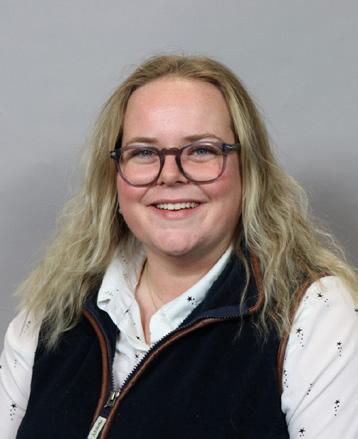
RURAL PRACTICE SURVEYOR

Tori is a Chartered Surveyor and a fellow of the Central Association of Agricultural Valuers, with experience in estate management, landlord and tenant matters, environmental schemes, valuation, compulsory purchase, and renewable energy.
YASMIN PEACH
RURAL PRACTICE SURVEYOR
Yasmin has a first-class degree in Rural Enterprise and Land Management from Harper Adams University. She is a Chartered Surveyor dealing predominantly with estate management, property management, and landlord and tenant matters.
GSC GRAYS NOVEMBER 2022 31
GSC Grays has dedicated consultants
ALNWICK
5F Linnet Court Cawledge Business Park NE66 2GD 01665 568310
BARNARD CASTLE 12 The Bank DL12 8PQ 01833 637000
BOROUGHBRIDGE 15-17 High Street YO51 9AW 01423 590500
CHESTER-LE-STREET Dunn’s 2, Bowes Offices Lambton Park DH3 4AN 0191 303 9540
across the North of England ready to hear from you. Offices opening soon in Driffield and Kendal.
COLBURN 5 & 6 Bailey Court Colburn Business Park DL9 4QL 01748 897630
HAMSTERLEY Swallow Cottage DL13 3QF 01388 487000
HEXHAM Pod 2 Eastburn, South Park NE46 1BS 01434 611565
LEYBURN 15 High Street DL8 5AH 01969 600120
PENRITH Blencowe Quarry Offices Quarry Lane CA11 0DE 01768 597005
GSC GRAYS 32 ALNWICK HEXHAM CHESTER-LE-STREET HAMSTERLEY STOKESLEY COLBURN LEYBURN BOROUGHBRIDGE NEWCASTLE UPON TYNE SUNDERLAND MIDDLESBROUGH DARLINGTON BARNARD CASTLE YORK WETHERBY PEAK DISTRICT NATIONAL PARK FOREST OF BOWLAND AONB LAKE DISTRICT NATIONAL PARK NORTH PENNINES AONB NORTHUMBERLAND NATIONAL PARK NORTH YORK MOORS NATIONAL PARK DONCASTER HULL SHEFFIELD MANCHESTER PRESTON LEEDS GAINSBOROUGH DRIFFIELD PENRITH KENDAL OUR OFFICES
COMING
STOKESLEY 26 - 28 High Street TS9 5DQ 01642 710742 COMING SOON
SOON
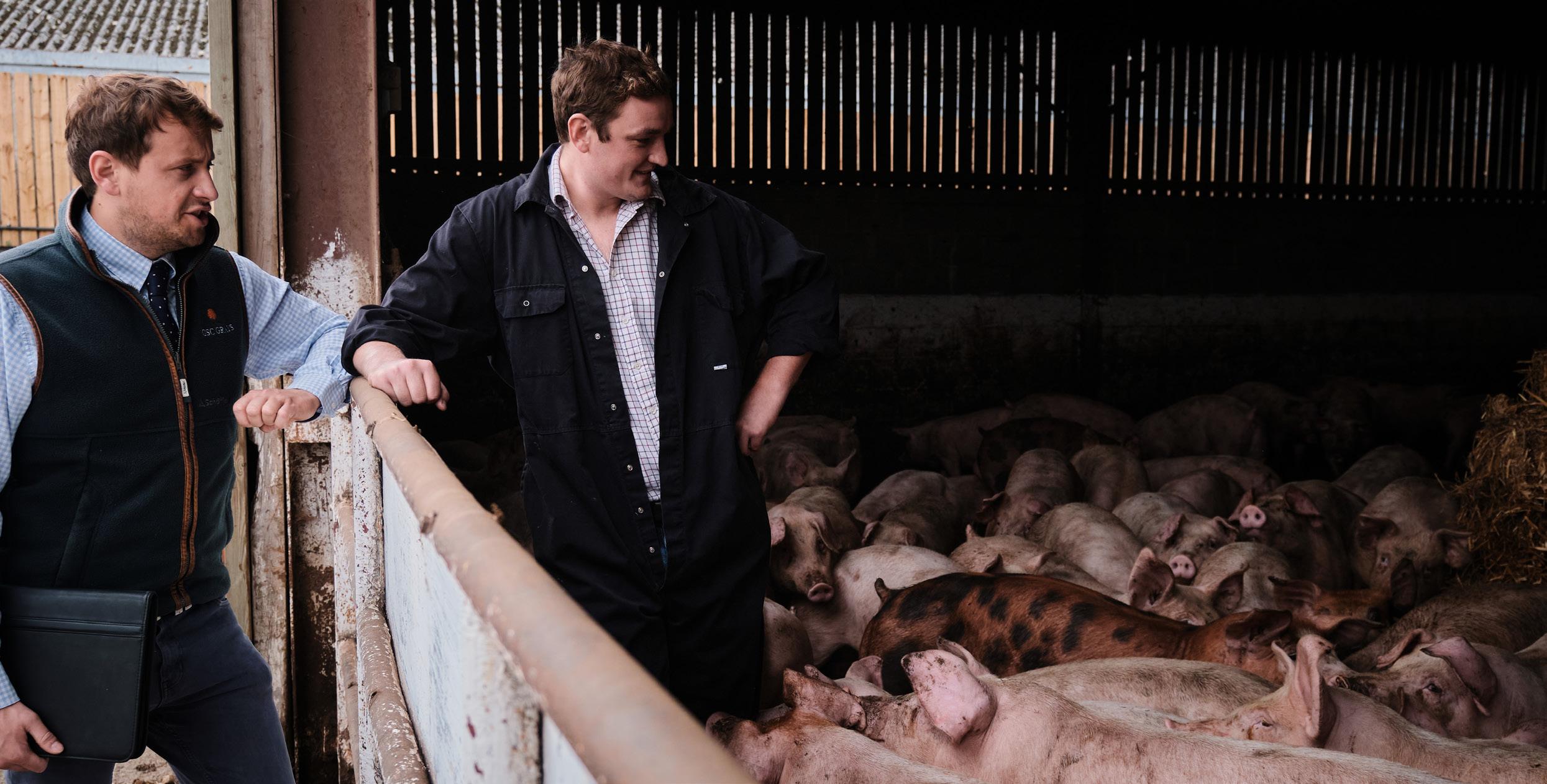


GSC GRAYS NOVEMBER 2022 33 ARE YOU A FARMER IN THE NORTH OF ENGLAND? GSC
and the NFU would like to invite you to join us
our
which will take
and find out
the FREE consultancy
our
Advice Service,
and
Why not enjoy breakfast on us at
our FREE
7.45
8.00
8.45
•
•
•
9.45
Questions 10.00
THE AGENDA FOR EACH SEMINAR IS AS FOLLOWS: 03333 059 059 | FBAS@GSCGRAYS.CO.UK Spaces are limited. To book your place, contact our team on: WHERE WILL WE BE? The GSC Grays Farm Business Advice Service is grant funded by DEFRA’s Future Farm Resllience Fund. Alnwick Gardens- Wednesday 30th November Cafe Ambio, J36, Kendal - Monday 5th December Pavilions of Harrogate - Tuesday 6th December Driffield RUFC - Wednesday 7th December Tynedale Rugby Club - Monday 16th January Selby Rugby Club - Tuesday 17th January Holiday Inn, Scotch Corner - Friday 20th January Tickled Trout, Penrith - Wednesday 25th January Roundthorn Hotel, Penrith - Friday 27th January WE INVITE YOU TO JOIN US AT OUR FARMING BREAKFASTS
Grays
at
Farming Breakfast seminars
place across the North of England. Come along
about
support available through
Farm Business
(up to 2.5 days bespoke advice), a political overview from your NFU Regional Director
a critical look forward to 2023 across key sectors from our Farm Business experts.
one of
Farming Breakfasts!
am – Arrival and coffee
am – Breakfast
am – Introduction from the Chair 8.50 am – Presentations • NFU Political & Regional Update • Arable
Beef & Sheep
Dairy and Intensive Livestock
FBAS – Help and guidance available
am –
am – Summary and close
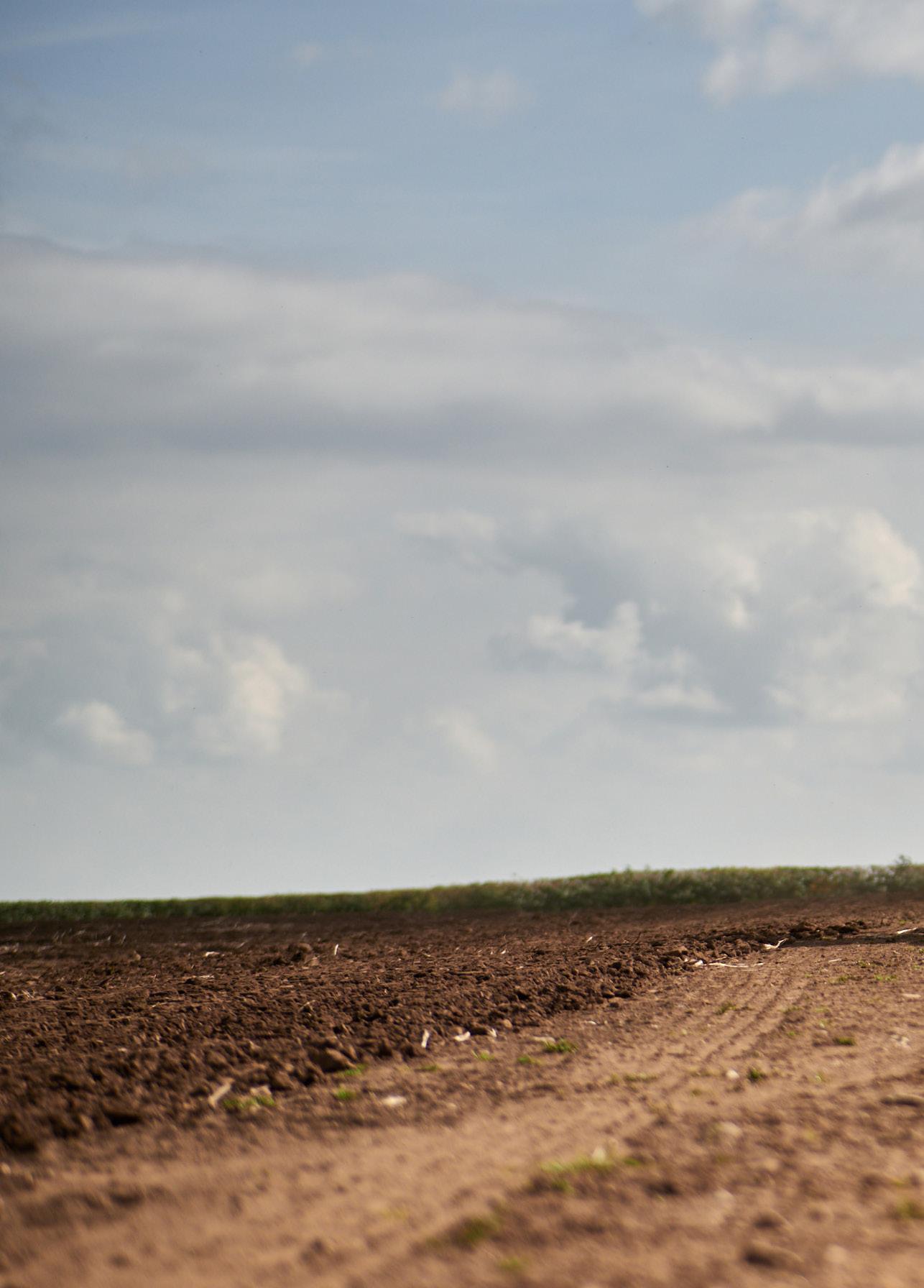
GSCGRAYS . CO . UK









 ROBERT SULLIVAN
ROBERT SULLIVAN









































 MATTHEW SHARP SENIOR FARM
MATTHEW SHARP SENIOR FARM








